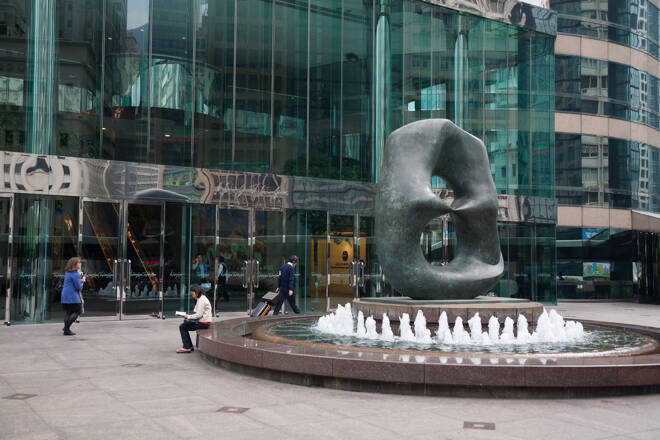Advertisement
Advertisement
Hang Seng Index, ASX 200, Nikkei 225: ASX 200 Eight Day Winning Streak Set to End
By:
Overnight losses across the US equity markets and the futures signal a painful start to February for the ASX 200 and Nikkei.
Highlights
- The Hang Seng Index bucked the broader market trend for a second session on Wednesday.
- On Thursday, overnight US economic indicators and the Fed rate statement and press conference will set the tone.
- Manufacturing PMI numbers from Australia, Japan, and China also need consideration.
Overview of the Wednesday Session
On Wednesday, the Hang Seng Index bucked the broader market trend for a second session.
US economic indicators signaled a robust US economy as the FOMC meeting commenced. The CB Consumer Confidence Index increased from 108.0 to 114.8 in January. Labor market numbers were also upbeat. JOLTs Job Openings unexpectedly rose from 8.925 million to 9.026 million in December.
However, caution ahead of mega-cap tech stock earnings reports pressured the Nasdaq and S&P 500.
On Tuesday, the Nasdaq Composite Index and the S&P 500 declined by 0.76% and 0.06%, respectively. The Dow gained 0.16%.
After-hours, Microsoft (MSFT) and Alphabet Inc. (GOOGL) released earnings results. Significantly, Alphabet shares slid by 5.72% as investors reacted to weaker-than-expected Google ad revenue.
From the Asian economic calendar, Australian inflation and private sector PMI numbers from China drew investor interest.
The Australian annual inflation rate softened from 5.4% to 4.1% in Q4. Softer-than-expected inflation numbers raised bets on an RBA rate cut in H1 2024.
However, private sector PMI numbers from China sent mixed signals. The NBS Non-Manufacturing PMI increased from 50.4 to 50.7 in January. Significantly, the Manufacturing PMI increased from 49.0 to 49.2. The manufacturing sector continued to contract despite policy measures to bolster the economy.
The disappointing PMI numbers from China and uncertainty about the liquidation of China Evergrande Group left the Hang Seng Index in negative territory.
The Fed, China, and the Asian Economic Calendar in Focus
On Thursday, overnight US economic indicators from Wednesday and the Fed interest rate decision need consideration. US labor market data signaled a weaker labor market backdrop. ADP employment increased by 107k in January after rising by 158k in December. The Employment Cost Index – Wages increased by 0.9% quarter-on-quarter in Q4 after rising by 1.2% in Q3.
However, the Fed interest rate decision, rate statement, and press conference also influenced.
The Fed left interest rates at 5.50%. Fed Chair Powell poured cold water on rate cut bets. Powell said more confidence is needed that inflation is moving toward the 2% target before cutting rates.
The US equity markets responded to the economic indicators and the Fed. On Wednesday, the Nasdaq Composite Index slid by 2.23%. Alphabet Inc. ended the session down 7.35%, as investors reacted to its earnings results from Tuesday. The S&P 500 and Dow fell by 1.61% and 0.82%, respectively.
On Thursday, the Asian economic calendar also warrants investor attention. Manufacturing sector PMIs from Australia, Japan, and China need consideration. After the market reaction to the NBS private sector PMIs from China, the China Caixin Manufacturing PMI could impact riskier assets more.
Economists forecast the China Caixin Manufacturing PMI to fall from 50.8 to 50.6 in January. An unexpected contraction across the manufacturing sector could pressure the Hang Seng Index.
Beyond the economic calendar, China Evergrande Group remains a consideration. Investors must monitor updates on liquidation plans of offshore assets and plans for operations in Mainland China.
On Thursday, the ASX 200 and Nikkei futures were down 84 and 510 points, respectively.
ASX 200
The ASX 200 rallied 1.06% on Wednesday. Banking, mining, and oil stocks contributed to the gains. On Wednesday, the S&P ASX All Technology Index gained 0.04%.
BHP Group Ltd (BHP) and Rio Tinto Ltd. (RIO) gained 0.47% and 0.35%, respectively. Fortescue Metals Group Ltd. (FMG) rose by 0.61%.
ANZ Group Holdings Ltd (ANZ) and Westpac Banking Corp. (WBC) rallied 1.53% and 1.51%, respectively. National Australia Bank Ltd. (NAB) and Commonwealth Bank of Australia (CBA) saw gains of 1.46% and 1.28%, respectively.
Woodside Energy Group Ltd (WDS) and Santos Ltd (STO) rose by 1.69% and 1.16%, respectively.
However, Gold (XAU/USD) stocks had a mixed session. Northern Star Resources Ltd. (NST) slid by 1.35%, while Evolution Mining Ltd. gained 0.63%.
Hang Seng Index
The Hang Seng Index declined by 1.39% on Wednesday. On Wednesday, the Hang Seng Mainland Properties Index (HSMPI) declined by 2.13%. The Hang Seng Tech Index (HSTECH) slid by 3.00%.
Alibaba (9988) and Tencent (0700) ended the day down 2.25% and 1.17%, respectively.
However, bank stocks had another mixed session. HSBC (0005) and China Construction Bank (0939) fell by 0.16% and 0.22%, respectively. Industrial Commercial Bank (1398) gained 0.26%.
The Nikkei 225
(Graph for reference purposes only)
The Nikkei ended the Wednesday session up 0.61%.
Bank stocks ended January on a high note. Sumitomo Mitsui Financial Group Inc. (8316) and Mitsubishi UFJ Financial Group Inc. (8306) gained 1.87% and 2.31%, respectively.
The main components of the Nikkei had another mixed session.
Sony Group Corp. (6758) rose by 1.48%. Fast Retailing Co. Ltd. (9983) and KDDI Corp. (9433) ended the day up 0.81% and 0.35%, respectively.
However, Softbank Group Corp. (9948) and Tokyo Electron Ltd. (8035) fell by 0.84% and 0.43%, respectively.
For upcoming economic events, check out our economic calendar.
About the Author
Bob Masonauthor
With over 28 years of experience in the financial industry, Bob has worked with various global rating agencies and multinational banks. Currently he is covering currencies, commodities, alternative asset classes and global equities, focusing mostly on European and Asian markets.
Advertisement
